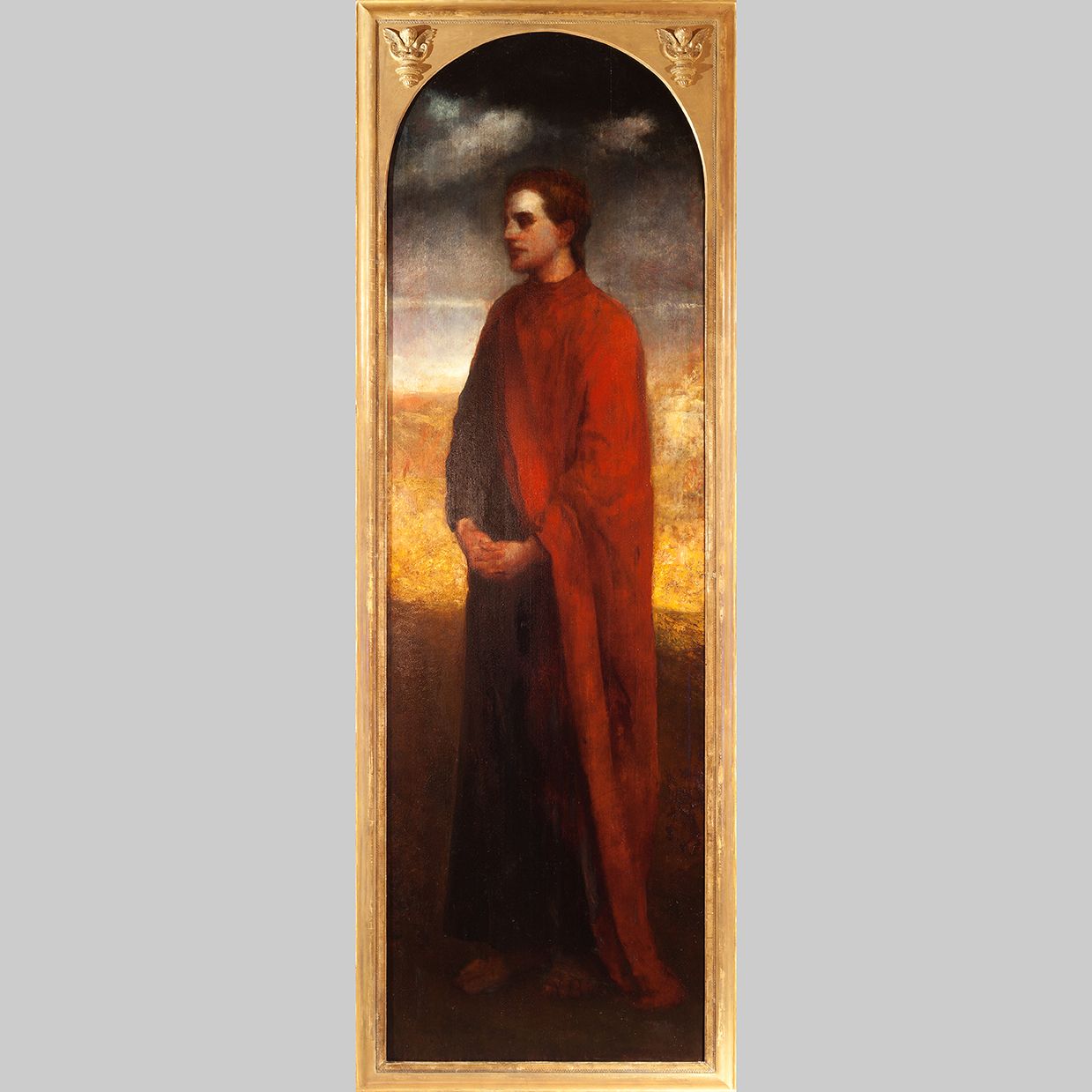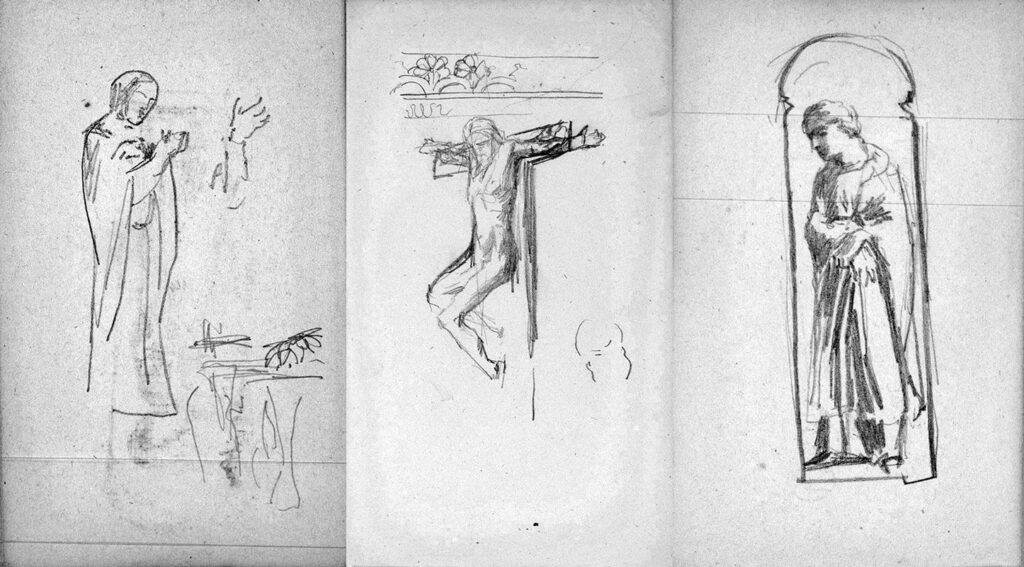John La Farge (1835–1910)
St. John the Evangelist at the Foot of the Cross, 1862–63
Oil on panel
McMullen Museum of Art, Boston College, Gift of William M. & Alison S. Vareika ’74, P’09, ’15, LP’16 and Alexandria & Michael N. Altman P’22, ’24, ’26, 2016.830.2

Jeffery Howe
Professor Emeritus, Art History

This panel depicting St. John the Evangelist is a pendant to the Virgin at left. The two panels were intended to flank a central one showing Christ on the Cross to form a Crucifixion triptych for an altar of the Roman Catholic Church of St. Peter in New York. La Farge worked on the commission for two years completing only these two outer panels before the rector rejected the project. Nevertheless, La Farge considered these to be key paintings in his development. His early biographer, Cecilia Waern, called them “among the most important of the artist’s work.”
Preparatory drawings for each of the triptych’s panels survive in the artist’s sketchbooks now in the Yale University Art Gallery (see images). The head of St. John is modeled on his friend, William James.
The triptych format and the panels’ tall narrow proportions evoke those of fifteenth-century Sienese altarpieces. The use of wood, instead of canvas, also links them to Italian Quattrocento models.

